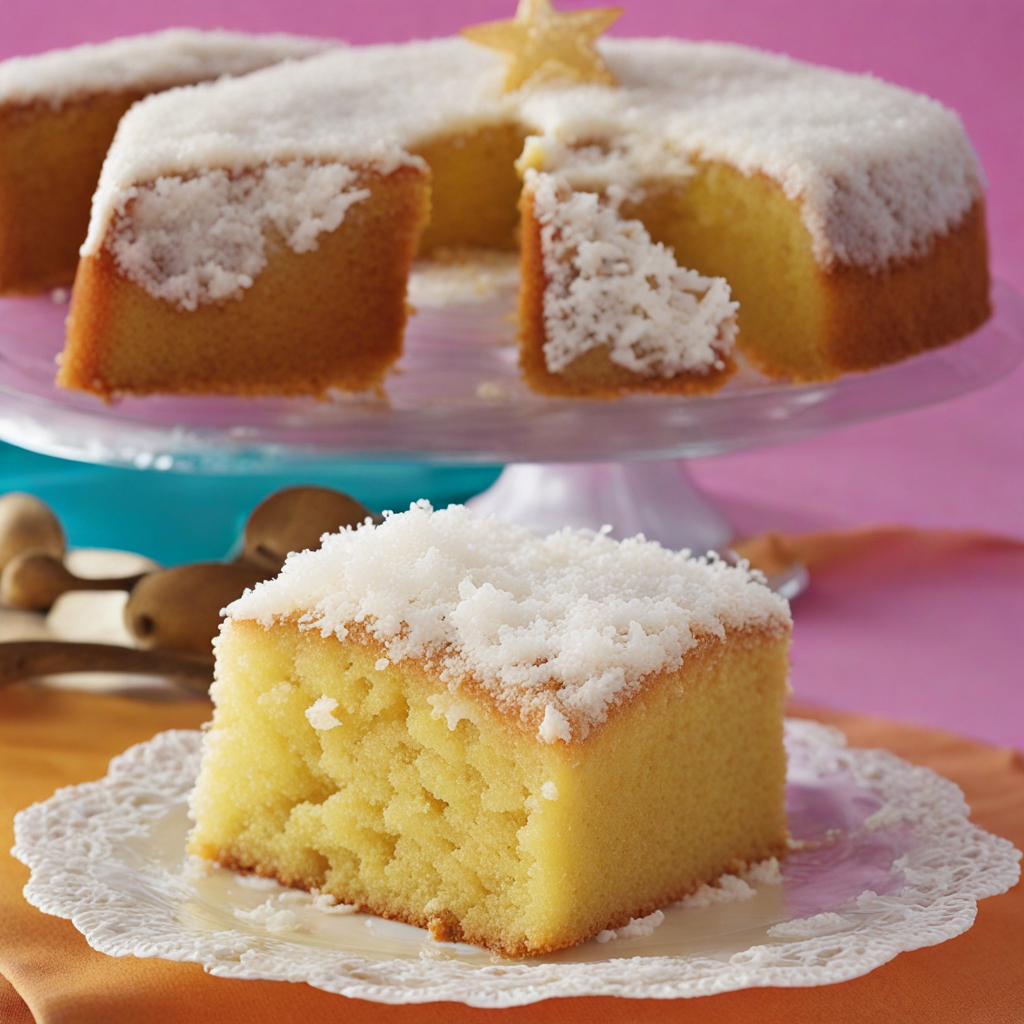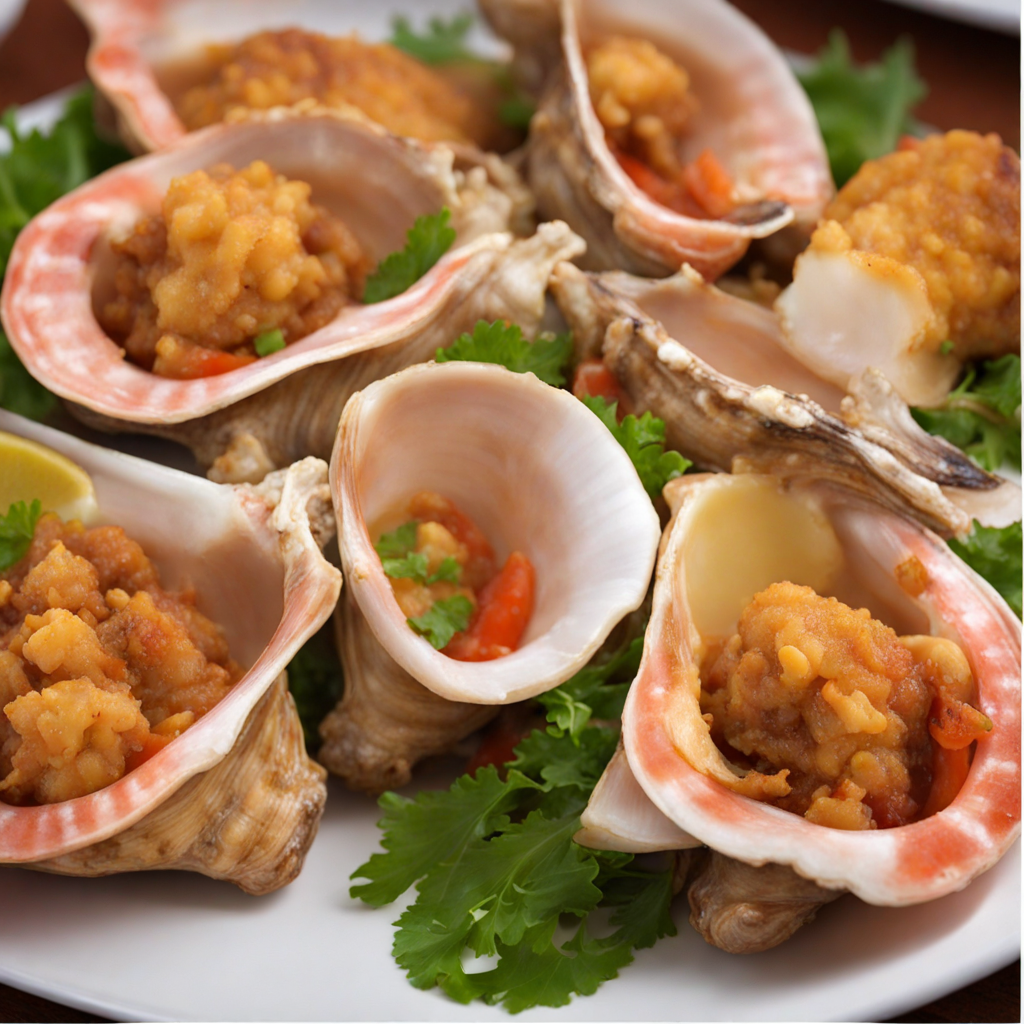Sugar Cake
Sugar Cake is a delightful treat from Antigua and Barbuda that captures the essence of Caribbean flavors in every bite. This sweet confection is primarily made from grated coconut, sugar, and various flavorings, often including vanilla and nutmeg. The combination of these ingredients creates a rich, sweet base that is both chewy and slightly crunchy, making it a unique snack to enjoy any time of the day. The use of fresh coconut not only adds a tropical aroma but also enhances the texture, giving each piece a satisfying bite. The preparation of Sugar Cake is a labor of love, as it involves carefully cooking the ingredients to achieve the perfect consistency. Once the mixture is cooked to the right temperature, it is poured into molds or spread onto a flat surface to cool and set. The final result is usually cut into small squares or rectangles, making it easy to share and enjoy. This treat is often enjoyed during festivals and special occasions, serving as a reminder of the island's rich culinary heritage. In addition to its delightful taste, Sugar Cake also reflects the cultural diversity of Antigua and Barbuda, with each family or vendor often having their own secret recipe. The sweetness of the cake is balanced by the natural flavors of the coconut, creating a harmonious blend that excites the palate. For those looking to explore new tastes, Sugar Cake offers a perfect introduction to Caribbean desserts, promising a sweet escape to the sun-kissed shores of the islands.
How It Became This Dish
Origins of Sugar Cake Sugar Cake, a beloved sweet treat from Antigua and Barbuda, has its roots deeply entwined with the islands' colonial history and the sugar cane industry. The origins of the cake can be traced back to the 17th century when sugar cane was introduced to the Caribbean by European colonizers. The favorable climate and fertile soil of the islands made them prime locations for sugar plantations. As a result, sugar became a significant export product, driving the economy and shaping the culinary landscape of the region. The early versions of Sugar Cake were simple and made primarily from sugar, coconut, and a hint of flavoring. The abundance of fresh coconuts on the islands made them a staple ingredient, and their sweet, rich flavor pairs beautifully with sugar. This combination of coconut and sugar reflects the resourcefulness of the local populace, who utilized what was readily available to create delicious treats. \n Cultural Significance Sugar Cake is more than just a dessert; it is a symbol of Antiguan and Barbudan culture and heritage. It is often enjoyed during festivals, family gatherings, and community events. The cake's preparation and sharing foster a sense of community and tradition, as families often pass down recipes through generations. The act of making Sugar Cake can be a communal activity, bringing together family members to create a treat that is steeped in nostalgia and love. In Antigua and Barbuda, Sugar Cake is often associated with celebrations such as Christmas and Easter, where it is served alongside other traditional dishes. These occasions highlight the importance of food in the social fabric of Antiguan and Barbudan life, where sharing meals signifies togetherness and cultural identity. The cake's sweet taste and unique texture make it a favorite among locals and tourists alike, enabling it to serve as both a comfort food and a delicacy. \n Development Over Time As the years went by, Sugar Cake evolved in both its preparation and presentation. Traditional recipes began to incorporate various flavorings and ingredients, leading to regional variations that reflect the culinary creativity of the islands. Some versions of Sugar Cake now include spices such as nutmeg and cinnamon, which add warmth and depth to the flavor profile. Others may feature additional ingredients like vanilla or dried fruits, showcasing the adaptability of this simple treat to different tastes and occasions. The popularity of Sugar Cake also led to its commercialization, with local vendors and bakeries offering their own unique takes on the classic recipe. This shift allowed Sugar Cake to reach a broader audience, making it a staple in local markets and festivals. Street vendors can often be seen selling freshly made Sugar Cake, enticing passersby with its vibrant appearance and sweet aroma. These vendors contribute to the lively atmosphere of Antiguan and Barbudan street life, turning Sugar Cake into a symbol of both tradition and modernity. \n Ingredients and Preparation The primary ingredients for traditional Sugar Cake include grated coconut, sugar, and water. The process begins with boiling the sugar and water together until it reaches the soft ball stage, creating a syrup. Grated coconut is then added to the syrup, along with any desired flavorings. The mixture is stirred until it thickens, after which it is poured into molds or onto a flat surface to cool and set. Once it hardens, it can be cut into pieces for serving. While the basic recipe remains the same, each family may have its own secret variations, making Sugar Cake a personal and cherished item. The texture can range from chewy to crunchy, depending on the cooking time and moisture content. This versatility ensures that Sugar Cake remains a beloved treat for people of all ages, each enjoying it in their own unique way. \n Sugar Cake in Contemporary Culture In recent years, Sugar Cake has gained recognition beyond the shores of Antigua and Barbuda. With the rise of culinary tourism, visitors to the islands are eager to experience local flavors and traditions. Sugar Cake has found its place on menus in restaurants and cafes, highlighting the importance of preserving traditional recipes while also catering to modern palates. Food festivals and cultural events often showcase Sugar Cake, allowing both locals and tourists to appreciate its significance in Antiguan and Barbudan culture. Moreover, the digital age has also played a role in the cake's popularity. Social media platforms have become a space for sharing recipes and images of Sugar Cake, inspiring home cooks to recreate this traditional treat. Online cooking classes and food blogs dedicated to Caribbean cuisine introduce Sugar Cake to a global audience, ensuring that its legacy continues to thrive. \n Conclusion Sugar Cake represents a delicious blend of history, culture, and community in Antigua and Barbuda. From its humble beginnings as a simple sweet made from locally sourced ingredients to its status as a cherished delicacy enjoyed during celebrations, Sugar Cake embodies the resilience and creativity of the Antiguan and Barbudan people. As it continues to evolve, both in homes and through commercial offerings, Sugar Cake remains an integral part of the islands' culinary identity, connecting generations and inviting everyone to partake in its sweet legacy.
You may like
Discover local flavors from Antigua And Barbuda







